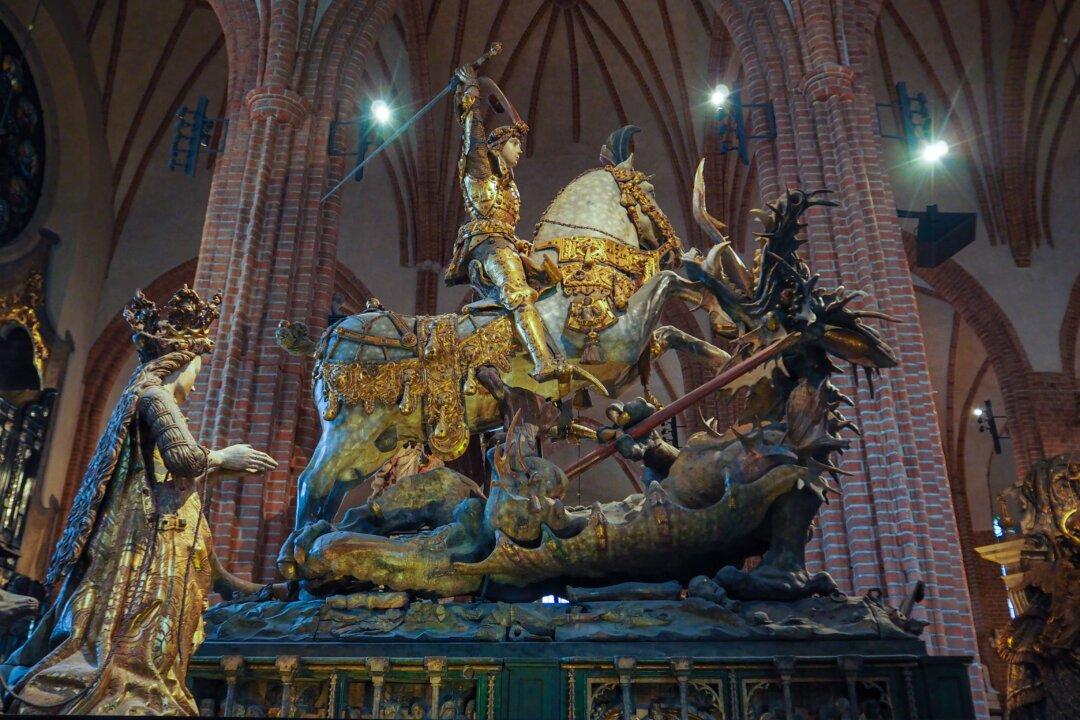The primary purpose of having these architectural casts was for the architectural students who went to the Royal Academy Schools from 1769 through to the 1950s.
To enroll at the Royal Academy Schools, originally architecture students had to produce a finished architectural design of their own invention. But after 1814, when the rules of the school were tightened, the students also had to present a drawing from a plaster cast: a plaster cast of an architectural fragment.
The plaster casts were bought by or donated to the Academy Schools over about a hundred-year period from around 1770.
Nearly all the plaster casts are from ancient Rome, so either from the Colosseum or from some of the museums like the Vatican Museum and the Capitolini Museum, which had, and still have, a lot of architectural fragments. The plaster casts came from places like the Round Temple by the Tiber near Rome, the Arch of Septimius Severus, and the Pantheon.

The casts have great archaeological value because the details on some of these buildings today have been damaged by weather pollution, overzealous 19th-century restorations, or even vandalism, and so they are a great historic record.
Many of the plaster casts were taken from molds cast in the 1790s. Scaffolding would have been built, and then casts were taken from sections of the building, such as the top of a capital, the architrave (the beam that spans the tops of the capitals and connects the columns), a little bit of a frieze, or just a small architectural ornamental detail.

It’s extraordinary, really, as some of the capitals are very high up; they’re way, way up off the ground. And, the casts are obviously interesting for students because they’d be quite difficult to draw because they are up so high, and you couldn’t get close up.
Architecture Students at the Academy
In the daytime, the students would be working in an architect’s office, learning some of the practical tools of the trade: how to do architectural drawings, how to understand building terms, and how to negotiate with builders, for example. In the office, the students were probably at an apprentice level, and they’d be told to draw another architect’s ideas. But if they came to the Academy Schools, they’d be asked about their own ideas for a building.At the Academy Schools, the students would make detailed drawings from the architectural plaster casts, but also use the plaster casts for inspiration for their competition drawings.
The Academy had specific competitions where a subject was set, such as to draw a measured drawing of a gateway (where the actual measurements are included in the drawing), or create their own designs for a mansion in the country, for example.
The students then had to do very beautiful finished drawings, and they could use the Academy facilities like the casts and books from the library to inspire them. Students would go to the architectural casts to see how classical architects combined details, and to observe them in an exact scale. Sometimes, students would even just measure the casts to understand the relationship of different ornamental details to each other.
In the 18th and 19th centuries, architects were using lots of details from classical architecture, and they’d combine their ornaments in a particular way and present these competition drawings, which were then judged and awarded medals.

Buildings in the 18th and 19th centuries very often had columns with capitals. So the plaster casts show different styles of capitals, including a Pegasus on the cast of the Corinthian pilaster capital from the Forum of Augustus in Rome, where a horse is part of the capital. If you look at many buildings from the 18th and 19th centuries, they are based on classical Greek or Roman buildings in terms of proportion, ornament, and style.

The Academy also had a professor of architecture, who gave a series of lectures for the students, which I think were well-attended. The professor would actually produce these rather beautiful lecture drawings, such as a re-creation of a famous building, or a re-creation of a building from the ancient world, that they would then discuss with students.
I think eventually, by the 1950s, the Royal Academy Schools stopped taking architecture students because it couldn’t compete with other places that were doing much more teaching for architects. But it was still a good place to come and meet other architects, attend lectures, and use the library.
Now, visitors can see a selection of the architectural casts at the Dorfman Architecture Court at the Academy. Here, the casts are hung quite densely. There are lots of different capitals, cornices, architraves, and medallions, hung together in a slightly grid-like manner, which does reflect how they were originally hung around 1867.







